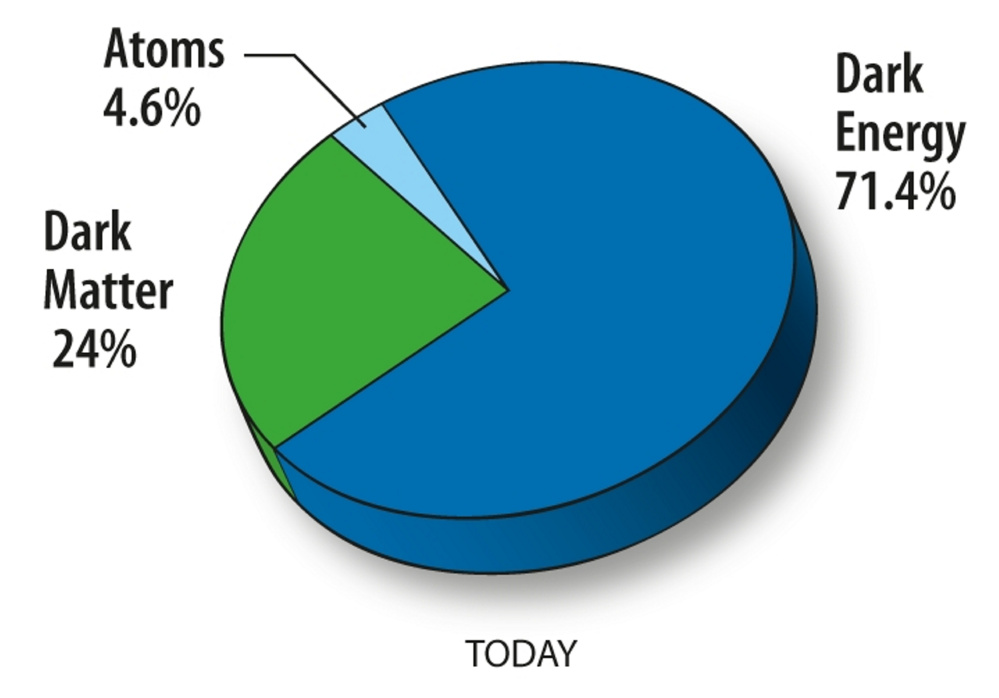When you step onto your porch late at night and stand there with your hands in your pockets looking up, the cosmos seems to be teeming with light beings. Your eye can pick about 6,000 individual stars in the light-pollution-free sky. Enough to keep a backyard naturalist occupied for life. Behind them are the sprays of the Milky Way, which, if you go back in and get a pair of binoculars, themselves turn out to be made of stars.
These are just the stars visible from Earth in our galaxy, which altogether contains 100 billion stars, or more — different astronomers argue for different estimates. A few billion here, a few billion there; pretty soon it adds up to something large. A while back we noted that a recent study found there are even more galaxies in the universe than the astronomers previously thought. About 10 times more, actually. Instead of the previously estimated around 225 billion galaxies, the new study says it’s likely the universe contains upward of 2 trillion galaxies.
This turns out to be a lot of individual stars. An average galaxy, one of the authors of the study estimates, contains around 100 million stars. A hundred million times 2 trillion is a mind-derailing number. To say the universe is immense would be, well, the understatement of the week.
Now, I was withholding information there a couple of months ago. The fact is, the 2 trillion galaxies are not the whole universe. It’s bigger. A lot bigger. In fact there is good reason to believe that all the galaxies and all their detectable stars, planets, gas, dust, protons, neutrons, electrons — and living beings — make up only about 4 percent of everything that exists. Ninety-six percent of everything that exists has never been detected.
What is this unseen 96 percent? The short answer: No one knows.
The long answer is, of course, mind-derailing.
The whole universe is expanding, which on the large scale means that all the galaxies are flying away from each other. A way to picture this is to think of a balloon with circles drawn on it. As you blow up the balloon, the circles don’t go anywhere, but they get farther apart. That’s roughly what’s been happening in the universe since it exploded into existence about 13.7 billion years ago at the Big Bang.
Now, gravity develops when a mass creates a bend in space-time. Masses can be measured by observing a planet’s or star’s motion with respect to other objects. To summarize an example explained on a NASA Web page, the Earth moves around the sun at about 60,000 mph. If the sun were four times more massive, the Earth would move at twice the speed. The same equations work for the stars circling around the center of the galaxy. By measuring the stars’ speed, the astronomers can estimate the mass of the galaxy. This relationship of mass to motion works throughout the universe, as far as anyone knows. This obviously oversimplifies things, but hopefully you get the picture.
Galaxies, being enormously massive, create enormous gravity. The 2 trillion galaxies all together have so much mass that their gravity should be pulling everything back and slowing down the expansion of the universe. The trouble is, other reliable measurements show the expansion is not slowing — in fact, it’s accelerating. How could this be?
The answer — many cosmologists think — is that an enormous amount of undetected matter and energy is exerting a force counter to the force of gravity. This unseen matter and energy does not interact with electromagnetic energy, or light, so it’s referred to as “dark.” Dark matter appears to make up 24 percent of the universe, dark energy not quite 72 percent, and the “baryonic” matter familiar to us, about 4 percent.
What is this dark matter and energy? It could be in the form of colossal numbers of brown dwarfs, which are small stars too cold and dim to detect. Or it could be in the form of supermassive black holes, so dense that even light does not escape them. Or it could be in the form of “nonbaryonic” particles and forces completely different from the matter known to us — and invisible.
Ninety-six percent of everything that exists is out of range of our perceptions.
As far as I know, the metaphysics of this astounding fact has not been explored very far because there’s almost nothing concrete — or abstract — to go on. It’s there. It’s greater than the 6,000 stars in your sky and all the distant galaxies in our swiftly tilting cosmos. Be careful how you think about this. You can get derailed.
Dana Wilde lives in Troy. His book “Summer to Fall” is available from North Country Press <http://www.northcountrypress.com/summer-to-fall.html>. You can contact him at naturalist1@dwildepress.net. Backyard Naturalist appears the second and fourth Thursdays each month.
Send questions/comments to the editors.




Comments are no longer available on this story